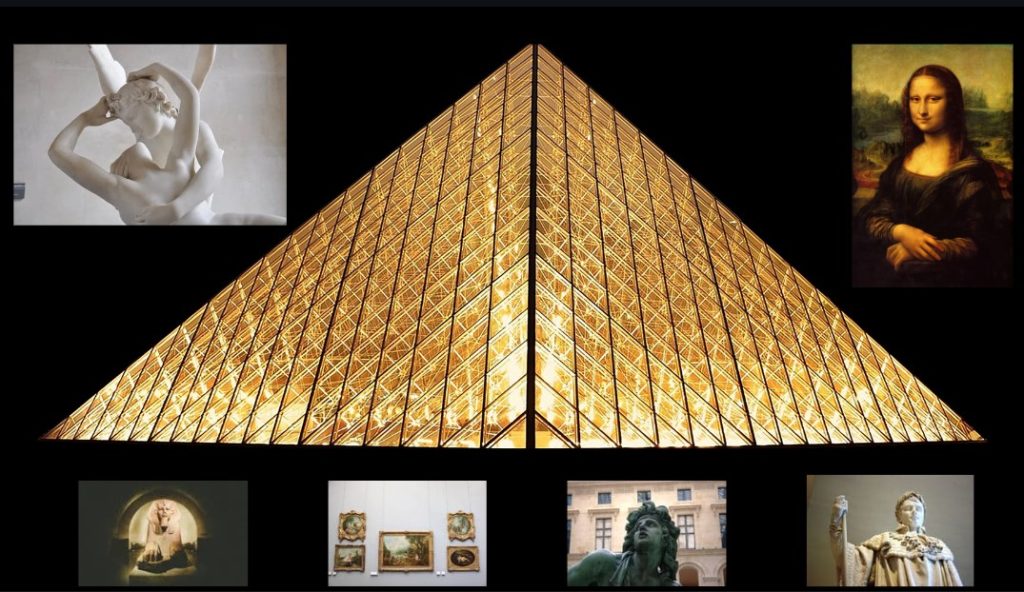Pyramide du Louvre in France.
The Louvre Pyramid ( Pyramide du Louvre ) is a large glass and metal structure designed by the Chinese-American architect I. M. Pei. The pyramid is in the main courtyard (Cour Napoléon) of the Louvre Palace in Paris, surrounded by three smaller pyramids. The large pyramid serves as the main entrance to the Louvre Museum. Completed in 1988 as part of the broader Grand Louvre project, it has become a landmark of the city of Paris.
History of The Louvre Pyramid
The Louvre Pyramid is a pyramid made of glass and metal, located in the courtyard of the Louvre Museum in Paris. In this pyramid, which is the largest of the four pyramids completed in 1989, modern and traditional architecture were used together.
It is located in the center of the Cour Napoleon courtyard of the Louvre Museum and is the main entrance of the museum. The Louvre Pyramid was chosen as the main entrance to provide a larger area for visitors to descend into the lobby below.
Designed by the Chinese architect Ieoh Ming Pei in 1983, this structure is 20.6 meters high and its square base is 35 meters on each side. The building consists of 603 rhombus and 70 triangular windows.
The architecture of the pyramid had a different style from the baroque architecture that was fashionable with the French revolution, and this futuristic pyramid was found by many to be incompatible with the general structure of the classical-style museum. Although there were many discussions about architecture, the pyramid was considered an ultra-modern style, combining the new and the old.

I.M. According to Pei, the silhouette of the Louvre museum had no curves. For this reason, curved shapes such as spheres and hemispheres were removed from the list of shapes suitable for this structure, and the pyramid was decided as the most suitable shape.
The Louvre Pyramid was created with a technique called “structural glazing”. In this technique, pieces of glass are placed on a metal mesh to shape huge installations. In structural glazing, the outer surface of the glass is completely exposed to the external environment and is simply attached to the frame underneath with sealant. A fluorine carbon lacquer coating is used in the Louvre Pyramid. While this technique provides a unique exterior appearance, it also allows natural light to reach the interior of the building more easily, but it is not possible to achieve this effect with all glass. For the Louvre Pyramid, an extra-clear, special type of glass called “Diamant Glass” was ordered from Saint Gobain.
Diamant glass owes its high transparency to its lower iron content compared to normal glass. In addition, no glass panels of the pyramid have been broken or cracked to date. One of the advantages of Diamant glass is its robustness and low maintenance cost.
The frame of the structure is made of 6000 steel and aluminum bars and has 2100 nodes. The weight of the building frame is about 100 tons. In the inner frame, there are 118 triangular and 675 diamond-shaped steel plates. These plates are connected with 128 steel beams and 16 steel cables. Glass pieces are fixed to the extruded aluminum sheets in the outer frame. This aluminum frame and steel structure are linked together by a wedge screw and steel bracket, which allows the frame to move in three directions. Thus, the entire structure has become both robust and flexible. The total weight of the Louvre Pyramid is 180 tons.
Bir yanıt yazın